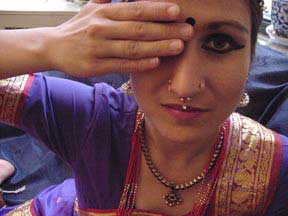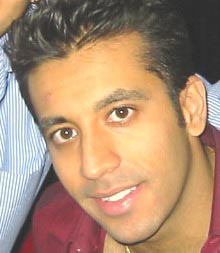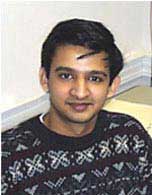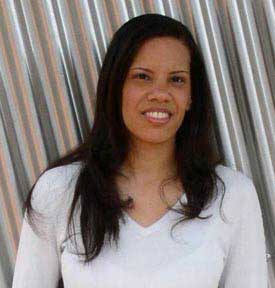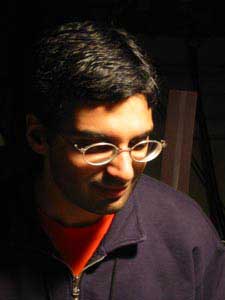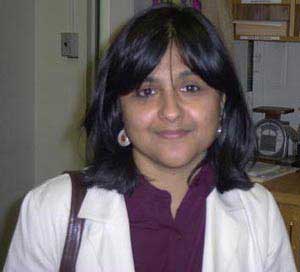Arts
MIT Gayin Dooriyan

Bollywood is gaining respect in the halls of academe.
|
Nothing quite erases the distance (mit gayin dooriyan) for the 20 million NRIs worldwide than Bollywood.
“Indian cinema has for some peculiar reason, thankfully for us, got into the hearts and minds of people outside Indian shores, and that’s why we are all here,” says Amitabh Bachchan, the legendary film star who has acted in more than 160 Indian movies. Increasingly now U.S. universities are beginning to pay attention to the unrelenting Bollywood phenomenon. Shanti Kumar conducts a graduate-level seminar at the University of Wisconsin-Madison, as part of its Media and Cultural Studies program. Priya Joshi teaches a Bollywood course at the University of California at Berkeley and Vamsee Jaluri at the University of San Francisco. The University of Wisconsin-Madison also convenes an annual Society for Cinema and Media Studies Conference on South Asia. At the Massachusetts Institute of Technology (MIT) in Cambridge, the Department of Comparative Media Studies offers two Bollywood courses taught by Tina Klein and Tuli Banerjee, whose favorite Bollywood actor is without a doubt, Amitabh Bachchan.
Klein says she developed an interest in Bollywood from her work in transnational cinema and the Diaspora. Banerjee, who was exposed to Indian cinema from an early age, says Bollywood was integral to her course on Indian popular culture. She says students in her courses learn and understand the relationship between pop culture and the social imaginary of India as a nation through this medium. While Bollywood fans may be surprised to learn that their trivial pursuits are treated with such gravity by academics at prestigious universities, Klein says: “American academics have been studying popular film and popular culture more generally for a long time now. As Asian film becomes better known in the U.S., academics become more interested in studying it. I think as more young people with family ties to South Asia become professors, they are bringing it into the classroom as well.” Banerjee’s course examines the elements of the formulaic “masala movie, music and melodrama, the ideas of nostalgia and incumbent change in youth culture, as well as shifting questions of gender and sexuality. Using various Bollywood films, we come to grasp how the film industry is organized and how it shapes what we see on the screen.” Aswin Punathembekar, an MIT almunus, currently pursuing his PhD at the University of Wisconsin-Madison, says “The most important thing to do here is to get away from the idea that the Hollywood mode of film production and aesthetics is the ‘right’ way and that all other cinemas are somehow not the norm. Most journalists writing in the West make this assumption that Indian cinema is little more than a poor imitation of Hollywood. The fact of the matter is Indian cinema has evolved its own aesthetic system, derived from a range of influences (Sanskrit and Parsi theatre, mythologies such as the Ramayan and Mahabharata, folk performance/music, etc.).
“Indian cinema, like cinemas in other nations, is best understood in relation to the socio-cultural and political contexts within which it operates, to which it responds. It should be studied because as a culture industry, it has enormous influence on various individual, social and political levels. “It plays an extremely crucial role in constructing identity (national, regional, religious, gender, sexual, linguistic, and so on). Think about all the ways in which Muslims, Christians, Sikhs, etc. are dealt with in Hindi cinema, or gender stereotypes, questions of sexuality…the list is endless!” In the MIT Bollywood classes, elements of Indian cinema are dissected, examined under the microscope, and serve as grist for term papers. Students argue over their favorite stars – Shahrukh Khan, Amitabh Bachchan, Aishwarya Rai, Vivek Oberoi, Hrithik Roshan, Preity Zinta and Zayed Khan – and films – Dil Wale Dulhaniya Le Jayenge, Dil Se, Jal Ho Naa Ho, Main Hoo Na. At one particular class they could come to an agreement on their worst film. LOC (Line of Control) bombed as far as everyone was concerned. Bad plot, bad songs and bad acting was their consensus, notwithstanding the fact that the movie had an all-star line-up. “Some of my non-Asian friends have a hard time figuring out Bollywood. They even ask if the songs are a ‘break’ in the film, rather than coming to understand how much of an integral part they are of the film,” notes senior Akhil Narang.
“If, for instance, the couple in question are in the house in the scene of the film and the song takes place in the kitchen, chances are it’s in ‘real time’ and should be seen as such. If the song changes from the present place/situation totally, to some exotic lands, well then, it’s now the ‘fantasy aspect’ of the film, but it still relates to the plot itself. Then there are the songs you internalize with, like Dil Se,” says graduate student Parmesh Shanai. Actor/producer Shahrukh Khan once explained Bollywood to novices: “The Hindi film is like Titanic, everything is told to you. This is going to happen, the ship will hit an iceberg and just in case you don’t know it, let me show you at the beginning of the film how it happened. Everything is explained, you don’t have to think too hard, just enjoy the moments. Films are very basic. You follow the story, you enjoy it, it’s full of emotion and whenever you get a little bogged down, a song will come. “A Hindi film is a complete variety entertainment show and you don’t have to worry about whether you’ll understand the film or not. I think films should not give social messages, or pass value judgments, or tell you what’s right and what’s wrong. Films should make you laugh, cry, sing, dance, have a good time and come back home, that’s all.” Now what could be simpler than that folks? Students and faculty alike are clearly having a blast.
“What I like most about the class is how the information we gain can be interwoven into many aspects of life, literature, etc.,” says senior Neil Sengupta. Tracy Daniel’s enthusiasm bubbles forth as she explains how the class enlightened her on Indian culture, ideals, as well as the color and splendor of the sets and costumes. In a paper entitled, “Bollywood Dreams: Visions of a Wet Sari”, she writes, “The sari is draped with numerous connotations of life, love, and sorrow, yet never is it more provocative than when drenched by Bollywood Cinema. The ‘wet sari’ sequence was popularized in the 1970’s and 80’s films of Raj Kapoor, who shrewdly exploited gratuitous titillation in the face of the importunate censorship looming over Indian filmmakers at the time. Pooja Kaul re-appropriates the sari in a manner that is equally suggestive, yet diverts itself from the seemingly gratuitous nature of Bollywood by grounding it in classical traditions of expression and emotion.” Commenting on the films themselves, she says, “I love the songs and even though I don’t understand Hindi, the themes break the language barrier. It’s easy to understand that two people are in love or see the turmoil between families.” Graduate student Sajan Saini, who has a growing personal interest in documentary filmmaking and script-writing, reminisces, “I grew up watching Hindi movies every weekend at a rented theatre where my parents ran the shows for local Indians living in Montreal. I thought Amitabh was ‘The Man.’ “During my teens, I went through a long phase of disenchantment with Bollywood. Since the time of DDLJ, I’ve found myself returning to a Bollywood, that’s been dynamically improving its narrative trends… and as a moviegoer, I’m beginning to appreciate and respect more the spectacle-driven entertainment value and technical proficiency of the Bollywood pot-boiler.
“Film makers like Mani Ratnam, Farhan Akhtar, and the super-cool Ram Gopal Varma have gotten me excited about Bollywood’s growing levels of narrative maturity, or at the very least character-intensive plots. And what I find particularly interesting, is how the aged Amitabh Bachchan has begun opening up new plot structures for Bollywood: stories about older characters and the personal struggles they are enduring, as opposed to college-based youthful love stories.” Film scholar and MIT alumnus, Sangita Shresthova, who now finds herself living in Prague, Czechoslovakia, wasn’t leaving Bollywood behind when she moved. She not only teaches traditional Indian and Bollywood dance there, but also recently organized a festival of Bollywood films with a Czech film maker who’s very interested in Bollywood films and an Indology scholar, who studied with her at Charles University. She told Radio Prague, “Our objective really was to bring Bollywood to Prague, and I think we’ve succeeded in doing that. We also really wanted to motivate the South Asian community here to be more active, and I think maybe we’ve succeeded in that.”
|
||||||||||||||||
|
| |

